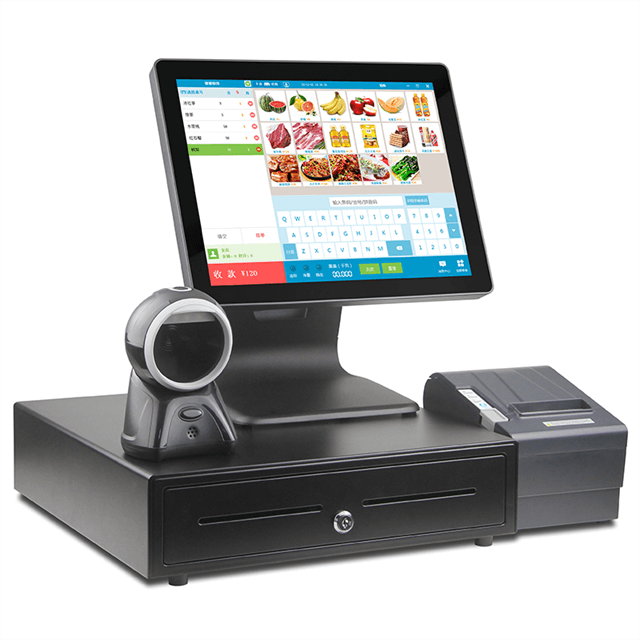







Views: 0 Author: Site Editor Publish Time: 2024-01-03 Origin: Site









In today's digital era, businesses are constantly on the lookout for efficient and convenient ways to handle transactions. Two commonly used terms in the realm of payment processing are POS systems and payment systems. While they may seem similar, there are distinct differences between the two. POS systems, or Point of Sale systems, refer to the hardware and software used to facilitate transactions at the physical location of a business. On the other hand, payment systems encompass a broader scope, encompassing various methods and technologies used for accepting and processing payments, including online payments, mobile payments, and more. Understanding the differences between these two terms is crucial for businesses looking to optimize their payment processes and provide a seamless experience for their customers. In this article, we will delve deeper into the intricacies of POS and payment systems, exploring their functionalities, features, and benefits, to help businesses make informed decisions to enhance their payment processing capabilities.
POS systems, also known as point of sale systems, have become an essential tool for businesses of all sizes. These systems are designed to streamline the sales process and improve overall efficiency. A POS system is a combination of software and hardware that allows businesses to manage their sales, inventory, and customer data in one centralized location.
One of the key benefits of using a POS system is the ability to track sales in real-time. This feature allows businesses to monitor their sales performance and make data-driven decisions. With a POS system, businesses can easily generate reports on sales trends, top-selling products, and customer buying behavior. This valuable information can help businesses identify opportunities for growth and optimize their inventory management.
Another advantage of using a POS system is the ability to streamline the checkout process. These systems are equipped with barcode scanners and receipt printers, making it quick and easy for businesses to process transactions. Additionally, many POS systems offer integrated payment solutions, allowing customers to pay using various methods such as credit cards, mobile wallets, or even contactless payments. This convenience not only improves customer satisfaction but also reduces the risk of human error during the checkout process.
Inventory management is another crucial aspect of running a successful business, and POS systems excel in this area. With a POS system, businesses can track their inventory levels in real-time, enabling them to effectively manage their stock. When an item is sold, the system automatically updates the inventory, ensuring accurate stock counts. This feature helps businesses avoid stockouts or overstocking, ultimately saving them money and improving customer satisfaction.
In addition to these core functionalities, many POS systems offer additional features such as customer relationship management (CRM) tools and loyalty programs. These tools allow businesses to gather customer data and create personalized marketing campaigns. By understanding their customers' preferences and purchase history, businesses can tailor their offerings and promotions to maximize customer loyalty and retention.
Payment systems play a crucial role in today's digital economy. With the increasing popularity of online shopping and cashless transactions, businesses are relying heavily on efficient and secure payment solutions. One such system that has gained significant traction is the Point of Sale (POS) system.
A POS system is a combination of hardware and software that allows businesses to process transactions at the point of sale. It typically consists of a cash register, barcode scanner, receipt printer, and a computer or tablet that runs the POS software. This system enables businesses to accept various payment methods, including credit and debit cards, mobile payments, and even cryptocurrency.
The main advantage of using a POS system is its ability to streamline the payment process. With just a few taps on the screen, customers can complete their transactions quickly and conveniently. This not only improves customer satisfaction but also helps businesses reduce long queues and waiting times.
Another benefit of POS systems is their ability to generate detailed sales reports and analytics. By tracking sales, inventory, and customer data, businesses can gain valuable insights into their operations. This information can be used to make informed decisions, such as identifying popular products, optimizing pricing strategies, and even personalizing customer experiences.
POS systems also offer enhanced security features. With the increasing risk of data breaches and fraudulent activities, it is crucial for businesses to prioritize the safety of their customers' payment information. POS systems incorporate encryption and tokenization technologies, ensuring that sensitive data is securely transmitted and stored.
Furthermore, POS systems can integrate with other business tools and platforms, such as inventory management systems and customer relationship management (CRM) software. This integration enables businesses to streamline their operations, improve inventory management, and provide personalized customer experiences.
In conclusion, POS systems are a vital tool for businesses looking to streamline their operations and improve customer experience. With features such as real-time sales tracking, streamlined checkout processes, and efficient inventory management, these systems offer numerous benefits. Investing in a POS system not only enhances a business's efficiency but also provides valuable insights to drive growth and success. POS systems have revolutionized the way businesses handle payments, offering convenience, efficiency, and security. They are an essential tool for any modern business, whether it's a small retail store or a large restaurant chain. Investing in a reliable POS system can significantly improve the overall payment experience and help businesses stay competitive in today's fast-paced digital world.